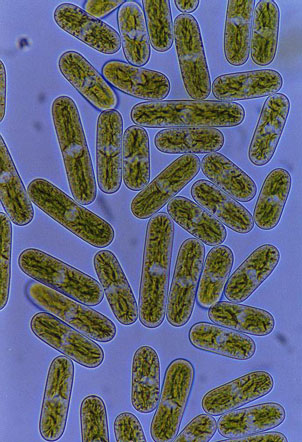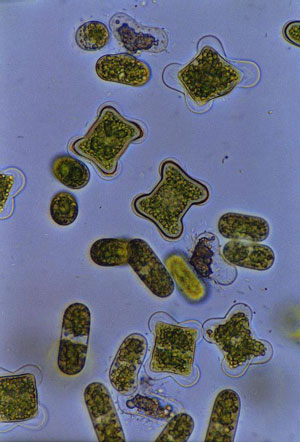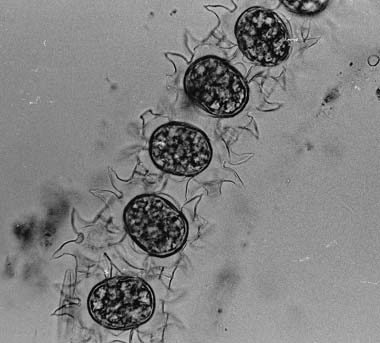|
|
|
|
|
|
| Also Closterium kuetzingii and Micrasterias papillifera are some of the species in which zygospore formation is relatively often recorded. | |
|
|
 Image © Henk Schulp |
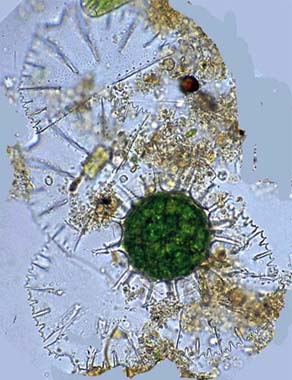 Image © Henk Schulp |
However, of the vast majority of desmid species zygospores are only very incidentally reported or even quite unknown. For example, of Micrasterias truncata, by far the most common Micrasterias species in Europe, there is only one single record (Homfeld 1929). Obviously, species-specific sexual potential is genetically determined. Apart from the fact that for conjugation often the simultaneous presence of physiologically different + and – cells is required, presumably in many species sexual potential in general is degenerated (Coesel 1974, Coesel & Teixeira 1974). Possibly this has to do with the environmental conditions under which most desmids use to flourish, i.e. peaty habitats that seldom or never dry out completely. In such an environment desmid cells may easily survive in vegetative state. Sexual reproduction, involving genetic recombination and attended by the formation of thick-walled, resistant zygospores, on the contrary, is particularly functional in instable habitats like wetlands that dry out thoroughly and for a lengthened time. |
|
|
(Partly)
abortive conjugation between English clones of Closterium ehrenbergii |
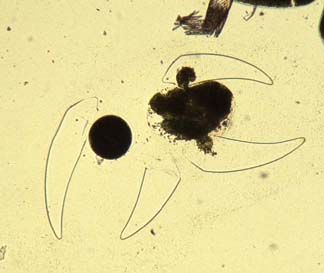 Image © Peter Coesel |
|
|
|
| home |
|
References:
Homfeld, H., 1929. Beitrag zur Kenntnis der Desmidiaceen Nordwestdeutschlands, besonders ihrer zygoten. — Pflanzenforschung 12: 1-96.
Coesel, P.F.M., 1974. Notes on sexual reproduction in desmids. I. Zygospore formation in nature. — Acta Bot. Neerl. 23: 361-368.
Coesel, P.F.M. & R.M.V. Teixeira, 1974. Notes on sexual reproduction in desmids. II. Experiences with conjugation experiments in uni-algal cultures.
Coesel, P.F.M., 1988. Biosystematic studies on the Closterium moniliferum / ehrenbergii complex in western Europe. II. Sexual compatibility. Phycologia 27: 421-424.
Coesel, P.F.M., 1989. Biosystematic studies on the Closterium moniliferum/ehrenbergii complex in western Europe. IV. Distributional aspects. — Cryptogamie, Algol. 10: 133-141.
Coesel, P.F.M., 1997. Matteola curvata (Nordst.) comb. nov., an interesting filamentous desmid from tropical America. — Algol. Studies 86: 11-16.
Handke, K., 1996. Zygosporen Saccodermer und Placodermer Desmidiaceen in Aufsammlungen der Jahre 1971-1995 aus Europa, Asien und Amerika. — Mitt. Inst. Allg. Bot. Hamburg 26: 5-129.
Ichimura, T., F. Kasai & P.F.M. Coesel, 1997. Geographical and ecological distribution of highly polyploid populations of the Closterium ehrenbergii species complex. Phycologia 36: 157-163.
